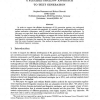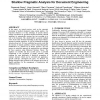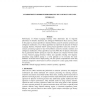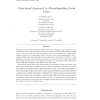13 search results - page 1 / 3 » A Flexible Shallow Approach to Text Generation |
CORR
1998
Springer
13 years 4 months ago
1998
Springer
In order to support the efficient development of NL generation systems, two orthogonal •methods are currently pursued with emphasis: (i) reusable, general, and linguistically•...
DOCENG
2009
ACM
13 years 11 months ago
2009
ACM
In this paper, we extend previous work on the automatic structuring of medical documents using content analysis. Our long-term objective is to take advantage of specific rhetoric ...
IJCSA
2008
13 years 5 months ago
2008
: Performance of Natural Language Interface often deteriorates due to linguistic phenomena of Semantic Symmetry and Ambiguous Modification (Katz and Lin, 2003). In this paper we pr...
SOFSEM
2000
Springer
13 years 8 months ago
2000
Springer
Abstract. In this paper we describe an e cient and scalable implementation for grammar induction based on the EMILE approach ( 2], 3], 4], 5], 6]). The current EMILE 4.1 implementa...
NLE
2010
13 years 3 months ago
2010
Lapata and Brew (2004) (hereafter LB04) obtain from untagged texts a statistical prior model that is able to generate class preferences for ambiguous Levin (1993) verbs (hereafter...




